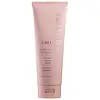What's inside
What's inside
 Key Ingredients
Key Ingredients

No key ingredients
 Benefits
Benefits

 Concerns
Concerns

No concerns
 Ingredients Side-by-side
Ingredients Side-by-side

Water
Skin ConditioningCocamidopropyl Betaine
CleansingSodium Lauroyl Methyl Isethionate
CleansingHeptyl Glucoside
Sodium Methyl Oleoyl Taurate
CleansingSodium Cocoyl Isethionate
CleansingSorbeth-230 Tetraoleate
EmulsifyingPolyquaternium-7
Phenoxyethanol
PreservativeSodium Chloride
MaskingCitrus Aurantium Dulcis Peel Oil
MaskingCaprylyl Glycol
EmollientCitrus Limon Peel Oil
MaskingDecyl Glucoside
CleansingPanthenol
Skin ConditioningHexylene Glycol
EmulsifyingMannitol
HumectantEthylhexylglycerin
Skin ConditioningPhosphatidylcholine
EmulsifyingGlycerin
HumectantPolyquaternium-10
Biotin
AntiseborrhoeicXimenia Americana Seed Oil
EmollientSorbitan Laurate
EmulsifyingPelargonium Graveolens Flower Oil
MaskingSr-(Wasp Spider Polypeptide-1 Oligopeptide-178)
Skin ConditioningAloe Barbadensis Leaf Juice
Skin ConditioningCetyl Alcohol
EmollientSodium PCA
HumectantSodium Lactate
BufferingPotassium Sorbate
PreservativeSodium Benzoate
MaskingArginine
MaskingAspartic Acid
MaskingGlycine
BufferingCitrus Aurantium Bergamia Fruit Oil
MaskingCeramide NP
Skin ConditioningStearamine
Sorbitan Oleate
EmulsifyingXanthan Gum
EmulsifyingAlanine
MaskingSerine
MaskingValine
MaskingThreonine
Isoleucine
Skin ConditioningProline
Skin ConditioningDimyristyl Phosphate
CleansingHistidine
HumectantPhenylalanine
MaskingGlycoproteins
Skin ConditioningOligopeptide-2
Skin ConditioningWater, Cocamidopropyl Betaine, Sodium Lauroyl Methyl Isethionate, Heptyl Glucoside, Sodium Methyl Oleoyl Taurate, Sodium Cocoyl Isethionate, Sorbeth-230 Tetraoleate, Polyquaternium-7, Phenoxyethanol, Sodium Chloride, Citrus Aurantium Dulcis Peel Oil, Caprylyl Glycol, Citrus Limon Peel Oil, Decyl Glucoside, Panthenol, Hexylene Glycol, Mannitol, Ethylhexylglycerin, Phosphatidylcholine, Glycerin, Polyquaternium-10, Biotin, Ximenia Americana Seed Oil, Sorbitan Laurate, Pelargonium Graveolens Flower Oil, Sr-(Wasp Spider Polypeptide-1 Oligopeptide-178), Aloe Barbadensis Leaf Juice, Cetyl Alcohol, Sodium PCA, Sodium Lactate, Potassium Sorbate, Sodium Benzoate, Arginine, Aspartic Acid, Glycine, Citrus Aurantium Bergamia Fruit Oil, Ceramide NP, Stearamine, Sorbitan Oleate, Xanthan Gum, Alanine, Serine, Valine, Threonine, Isoleucine, Proline, Dimyristyl Phosphate, Histidine, Phenylalanine, Glycoproteins, Oligopeptide-2
Ingredients Explained
These ingredients are found in both products.
Ingredients higher up in an ingredient list are typically present in a larger amount.
Caprylyl Glycol is a humectant and emollient, meaning it attracts and preserves moisture.
It is a common ingredient in many products, especially those designed to hydrate skin. The primary benefits are retaining moisture, skin softening, and promoting a healthy skin barrier.
Though Caprylyl Glycol is an alcohol derived from fatty acids, it is not the kind that can dry out skin.
This ingredient is also used as a preservative to extend the life of products. It has slight antimicrobial properties.
Learn more about Caprylyl GlycolDecyl Glucoside is a glucose-based surfactant and emulsion stabilizer. It is created by reacting glucose with the fatty acids from plants.
Surfactants help clean the skin by trapping oil, sebum, and dirt to be washed away. As an emulsion stabilizer, it stabilizes the ingredients in a product by preventing them from separating.
This ingredient is biodegradable and non-toxic. This ingredient is commonly found in baby shampoos.
Decyl Glucoside is sometimes used to stabilize the UV filter Tinosorb.
Learn more about Decyl GlucosideGlycerin is already naturally found in your skin. It helps moisturize and protect your skin.
A study from 2016 found glycerin to be more effective as a humectant than AHAs and hyaluronic acid.
As a humectant, it helps the skin stay hydrated by pulling moisture to your skin. The low molecular weight of glycerin allows it to pull moisture into the deeper layers of your skin.
Hydrated skin improves your skin barrier; Your skin barrier helps protect against irritants and bacteria.
Glycerin has also been found to have antimicrobial and antiviral properties. Due to these properties, glycerin is often used in wound and burn treatments.
In cosmetics, glycerin is usually derived from plants such as soybean or palm. However, it can also be sourced from animals, such as tallow or animal fat.
This ingredient is organic, colorless, odorless, and non-toxic.
Glycerin is the name for this ingredient in American English. British English uses Glycerol/Glycerine.
Learn more about GlycerinPhenoxyethanol is a preservative that has germicide, antimicrobial, and aromatic properties. Studies show that phenoxyethanol can prevent microbial growth. By itself, it has a scent that is similar to that of a rose.
It's often used in formulations along with Caprylyl Glycol to preserve the shelf life of products.
Polyquaternium-10 is an ammonium salt of hydroxyethylcellulose. It is a white and granular powder used as a film-former and anti-static agent.
This ingredient is commonly found in hair conditioning products. According to a manufacturer, its positive charge makes it great for absorbing hair proteins. The manufacturer also states this ingredient helps with curl retention.
For haircare friends: this ingredient is not a silicone.
Learn more about Polyquaternium-10Water. It's the most common cosmetic ingredient of all. You'll usually see it at the top of ingredient lists, meaning that it makes up the largest part of the product.
So why is it so popular? Water most often acts as a solvent - this means that it helps dissolve other ingredients into the formulation.
You'll also recognize water as that liquid we all need to stay alive. If you see this, drink a glass of water. Stay hydrated!
Learn more about WaterXanthan gum is used as a stabilizer and thickener within cosmetic products. It helps give products a sticky, thick feeling - preventing them from being too runny.
On the technical side of things, xanthan gum is a polysaccharide - a combination consisting of multiple sugar molecules bonded together.
Xanthan gum is a pretty common and great ingredient. It is a natural, non-toxic, non-irritating ingredient that is also commonly used in food products.
Learn more about Xanthan Gum